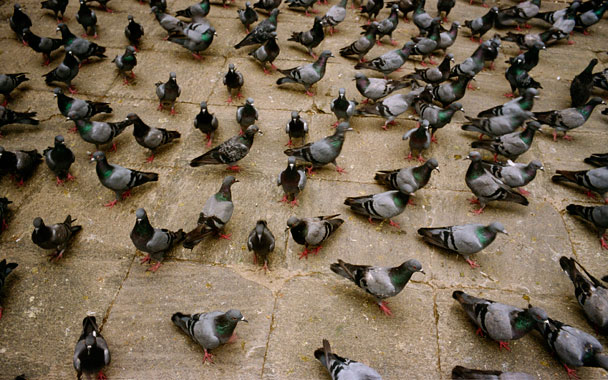If any bird has an image problem, it’s the pigeon. Known as dirty, pesky, trash-picking urbanites—“rats with wings,” if you’re feeling less charitable—these ubiquitous birds can somehow live in our streets and still retain their reputation as gastronomic delicacies.
There’s a reason for that: Pigeons taste great.
They are typically eaten at about four weeks of age, just before they leave the nest. These young pigeons, called squabs, have dark, tender meat full of rich, gamey flavor. But make no mistake: Though they are bred and raised on specialty farms, they’re the same species as the pigeons on the street, the Rock Pigeon.
It’s difficult to find squab in grocery stores, and the price of the bird at restaurants is on par with lobster. My first experience eating squab was at Boston’s No. 9 Park, which happens to be located across the street from Boston Common, where throngs of street pigeons gather every day to beg for bagel scraps and day-old bread. Any qualms I had about this irony vanished when I had my first taste. Served on a bed of purple rice with wild mushrooms, the deep red meat was earthy and flavorful, and I instantly understood why the bird has long been considered a delicacy.
But if pigeons are so tasty, why shouldn’t we all start feasting on the ones that fill our streets (and do our part for pigeon control)? Some Europeans did just that during the lean years of World War II, but under normal circumstances few people are tempted by city birds, and with good reason. Milt Friend, a wildlife expert from the National Wildlife Health Center, says that city pigeons are notorious for having large amounts of lead in their bodies. They accumulate lead not only by breathing polluted air, but also by ingesting everything from paint chips to roadside dust, which also includes such nasty stuff as cadmium particles from vehicle tires. (For this reason, the birds have been used to study environmental contaminants in cities.) While pigeons living in rural areas are fair game, Friend says, “I’d have to be awful hungry to eat a pigeon off the street.”
It’s worth noting, though, that the street pigeons we see in North America today are here because pigeons were carried over on ships to feed European colonists. In fact, people have been feasting on these birds for thousands of years.
Ancient Egyptian and Biblical texts attest that pigeons were eaten and offered as religious sacrifices. And pigeons were a favored bird of the Romans, who loved poultry of all kinds, developing ruthless ways to keep the birds fat and tender that included breaking their legs.
In Europe in the Middle Ages, pigeons were kept in lofts at the tops of houses or in large stone dovecotes, which became a hallmark of every country estate. (Doves, by the way, are closely related to pigeons, but they’re not the same species.) Pigeon-keeping was often a luxury of the nobility, particularly in France, where the birds of wealthy landowners were allowed to feed on the commoners’ fields.



 Pinterest
Pinterest


